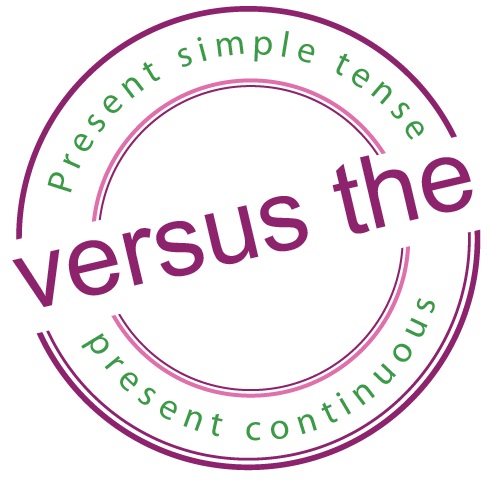When to use the Present Simple and Present Continuous Tenses

Understanding when to use the present simple and present continuous tenses can be confusing for learners. Here are some examples to help you better understand the differences.
[Note: Click here to learn how to form the present continuous and present simple tenses.]
Present SimpleGeneral Truths & FactsWe use the present simple to talk about things that are generally true or to state facts.
Mostly Permanent Situations |
Present ContinuousActions Happening NowWe use the present continuous to talk about things that are happening at this moment.
Temporary Actions that are Happening Now | |
|
We use present simple for situations that are mostly permanent, for jobs or hobbies and things that always happen.
|
We use present continuous tense to talk about situations that are temporarily happening.
| |
Habits / Describing Frequency of Actions
|
Describing Irritating or Annoying Habits | |
|
Use present simple to talk about routines and habits (how frequently we do or don't do things - e.g., every day, usually on Tuesdays, often, never, sometimes).
|
Use present continuous to talk about habits that are annoying and bother us. ("always" "constantly," "continuously," and "continually").
| |
Actions Set by a Timetable or Schedule |
Definite Plan for Near Future | |
|
Use the present simple for actions and events that are set by a timetable (often something that is set by an organization). This means we can use the present tense to describe something in the future.
|
We use the present continuous tense for actions that we're planning to do in the near future. This means we can use the present tense to describe something in the future.
| |
Certain Verbs Describing a Present State |
Don't Use Stative Verbs in Present Continuous |
Certain verbs are used to express opinions, states, feelings and emotions (not actions).
Common stative verbs include: be, belong, seem, realize, think, believe, understand, like, love, hate, hear, smell, see, think, understand, want, wish
|
We do use the simple present with verbs that describe states, opinions, feelings and emotions.
|
We do not use stative verbs with the present continuous (unless they express a dynamic meaning).
|
I hope this has been helpful in showing the main differences between the present simple and present continuous tenses.
How to make the present simple and present continuous tenses
If you need to you can review how to make the present simple and present continuous tense. I go over the positive and negative forms, questions, spelling and give lots of examples.
- Home Page ›
- Main Grammar Page ›
- Present Simple vs Present Continuous
